Discover the beautiful state of Rheinland-Pfalz!
A stunning abundance of nature, cultural highlights & enjoyment of life
Rheinland-Pfalz is not only a great place to live, but also offers countless breathtaking travel destinations nearby you should consider exploring with the family. The region is well-known for its forests, its wine-growing regions, its historic cities, its magnificent castles, and all around beautiful countryside.
No matter if you are interested in cultural or nature travel, sightseeing in one of the many fascinating cities, marveling at UNESCO sites, enjoying the calming picturesque landscape, or visiting the infamous Wurstmarkt, lovely Christmas markets, or extraordinary parades during the crazy carnival season, Germany has something for everyone. Rheinland-Pfalz is a highly attractive and popular travel destination in the heart of Europe at any time of the year!
Are you rather active when it comes to planning your leisure time?
No problem! Here, you will find plenty of insider tips on where you can pursue your favorite leisure time activities like cycling, hiking, swimming or ice-skating.
Have fun checking out your options!
Interactive Map
Travel
Bernkastel-Kues
Bernkastel-Kues is considered to be one of the favorite excursions on the Mosel Valley. Every year, visitors from all over the world come to the ‘International Town of Wine’ to relax and rewind. Situated on both sides of the Mosel, Bernkastel is surrounded by its famous slate covered vineyards, known worldwide to produce some of the best wines. Overlooking Bernkastel are the ruins of Landshut Castle. The narrow alleyways invite one to stroll through its rich history, closely associated with pleasure and viticulture for more than 2000 years. Stroll through the beautiful square with its proud half-timbered buildings which cannot be found elsewhere on the Mosel.
Bernkastel-Kues
GOOGLE MAPS
Group tours may be booked through the Tourist Info. Cost 55-65 €, depending on length and the size of group.
Phone 06531 4023
WEB
Distance from Spangdahlem 40 km
This information first appeared in the touristic brochure "Welcome to our region!" of the Host Nation Council Spangdahlem e.V.
Bettenfeld: Mosenbergkomplex
Windsborn Crater Lake is the only real crater lake north of the Alps. A quiet, circular lake surrounded by forest and overshadowed by the bizarre slag rings of Mosenberg, it has been dominate for 24000 years. Take time to linger around one of the footbridges and take in the beauty of the area. Situated next to Windsborn is the swampy inaccessible Hinkelsmaar. A massive lava explosion formed Mosenberg massif into the Kyll Valley. Horngraben (trenches) is particularly wild and rugged, covered with countless craggy basalt boulders.
Information
Maarmuseum Manderscheid
Wittlicher Str. 11
54531 Manderscheid
GOOGLE MAPS
Phone: 06572 920110
WEB
This information first appeared in the touristic brochure "Welcome to our region!" of the Host Nation Council Spangdahlem e.V.
Binsfeld
The town of Binsfeld borders at south and south-east directly on Spangdahlem Air Base. Binsfeld was first mentioned in the year of 844, thus, looks back on 1167 years of history. Binsfeld was at that time owned by the prince elector of Trier and, until the end of the 17th century, an important postal station between Brussels and Vienna. Between 1900 and 1965 the town was connected to the German railway system and connected Binsfeld with the town of Philippsheim. Proving this is the restored narrow gage engine, now serving as a monument of that time. It is displayed close to the Binsfeld traffic circle.

This information first appeared in the touristic brochure "Welcome to our region!" of the Host Nation Council Spangdahlem e.V.
Bitburg: The beer town in the Eifel
Bitburg’s beginnings were very humble. Nearly two thousand years ago, a Heerstrasse (a Roman Military Road that went from Lyon, France, then to Metz, Trier on to Köln) came into being. On their way from Trier to Köln the Roman Army was able to march approximately thirty kilometres in a day. As a result, Bitburg served as their first resting station and thus, became a small Roman fortress. As the Roman Empire expanded, the fortress flourished into a centre of handcrafts and trade.
Throughout its history, Bitburg has often been a casualty of war and suffered horrendously with the most horrible event occurring on Christmas Eve in 1944. Artillery shelling and bombing raids from the Allies destroyed nearly 90% of the town. It was concluded in German military reports that Bitburg was a "tote Stadt", a dead city. Despite all of this, the citizens of Bitburg have ceaselessly proven their fortitude and gallantry and have continually managed to re-establish and restore their city. These reasons account for the development of the modern Bitburg.
"Haus Beda" is located at the "Beda" parking lot between the County Community Bank and the "Volksbank". It was founded in 1976 by Dr. Hanns Simon, who was a senior partner of the Bitburg Brewery. Haus Beda is Bitburg`s beautiful Cultural Center with a picture gallery of Fritz von Wille, a very famous German painter. Worthwhile visiting is the banqueting hall, where concerts and other exclusive events take place. Also part of the "Beda Foundation" is a well assorted library with over 50.000 pieces of literature.
Bitburg has always had a military presence all through its history. After WW II, the French and the Luxembourg had military control of the area. In 1955, Luxembourg withdrew. After the arrival of the 53rd Fighter-Bomber Squadron and the 36th Fighter-Bomber Wing from Fürstenfeldbruck AB near Munich, Bitburg became an official American military installation in September 1952. There was a time where the sum of NATO forces and their family members outnumbered the local populace. In 1985, the French closed down their garrison and handed their detachment to the Americans providing them with very much needed space. With the fall of the Berlin Wall and Base Realignment and Closure Act, Bitburg was one of the many military bases to be closed.
In September 1994, after 42 years, Bitburg Air Base closed its gates … and thus, the ending of an era. The sight of the former air base is still referred to by the locals as "Flugplatz". Bitburg is also the district seat of the Bitburg-Prüm County. It is often regarded as an ‘Eifel town with international flair’. Ever since its 1250 year anniversary in 1965, Bitburg hosts the European Folklore Festival. This festivity, which takes place every second weekend in July, has become one of the most famous Folklore festivals within Germany.

This information first appeared in the touristic brochure "Welcome to our region!" of the Host Nation Council Spangdahlem e.V.
Cathedral Speyer
The cathedral St. Mary and St. Stephen in Speyer is a church that is unique in its spiritual, architectural, and historical dimensions. Day for day this house of God, founded in the 11th century, casts its spell on people, serves as a site of contemplation and prayer, and testifies to the legacy of romanesque architecture. Furthermore, the cathedral of Speyer is the gravesite of Salian, Staufer, and Habsburg rulers, thus functioning as a symbol of the medieval emperorship. In 1981, the cathedral was added to the UNESCO World Heritage list.
Dom zu Speyer St. Maria und St. Stephan
Domplatz 1a
67346 Speyer
GOOGLE MAPS
Email: info@dom-zu-speyer.de
WEB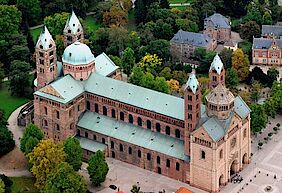
Photo: Klaus Landry © Domkapitel Speyer
Celtic Path
Don’t forget to accompany a visit to the Donnersberg Keltendorf with a visit to Der Keltenweg (The Celtic Path). Der Keltenweg leads visitors to witness how our Celtic ancestors lived, along the mighty ramparts - relics of the former city wall. Reconstructions and restored walls testify to the architectural achievements of the pre-Roman inhabitants. The starting point of the Der Keltenweg is at the Parkplatz Donnersberg (Donnersberg parking lot).
Donnersberg-Touristik-Verband
Uhlandstraße 2
67292 Kirchheimbolanden
GOOGLE MAPS
Phone (06352) 17 12
WEB
This information first appeared in the newspaper supplement "Westpfalz: Entdecken – Erleben – Genießen" of the Saarbrücker Zeitung/Pfälzer Merkur sponsored by the ZukunftsRegion Westpfalz e.V.
Celtic Village
See how the Celts lived: the Keltendorf (Celtic village) in Steinbach is not a museum in the classic sense, because here visitors actively follow in the footsteps of the people who lived on the Donnersberg Mountain over 2000 years ago. Steinbach offers numerous opportunities for people of all ages to test their creativity and skill in the Celtic village. On the weekends, in addition to expert guides leading tours, there are also changing activities such as archery or felting.
Keltendorf am Donnersberg e.V.
Brühlstraße
67808 Steinbach
GOOGLE MAPS
Phone (06352) 17 12
This information first appeared in the newspaper supplement "Westpfalz: Entdecken – Erleben – Genießen" of the Saarbrücker Zeitung/Pfälzer Merkur sponsored by the ZukunftsRegion Westpfalz e.V.
Country Art at Eschbachhof
Scenically located, the Eschbachhof in Baustert near Bitburg offers a fine selection of country art, carefully restored antique furniture, handmade flower arrangements and wreathes, Bauernmalerei (tole painting) and much more. Decorated according to the season, the house has an exhibit area of more than 250 square metres. A Christmas exhibit can be seen throughout the year in the former stables. Eschbachhof opening hours are Tuesday-Friday from 14.00-18.00 and Saturdays from 10.00-14.00. Naturally, the owner, Frau Mathes, will gladly see guests outside the normal opening hours.
Eschbachhof
Eschbach 11
54636 Baustert
GOOGLE MAPS
Phone for an appointment: 06527/1003 or 06527/933888
WEB
This information first appeared in the touristic brochure "Welcome to our region!" of the Host Nation Council Spangdahlem e.V.
Cultural Center "Old Post Office"
The cultural center "Old Post Office" ("Alte Post”) is characterized by impressive architecture—after an extensive restoration, this building originally built in 1893 shines in a new splendor.
The forum hosts a permanent exhibition with works of the romantic painter Heinrich Bürkel and, with the Hugo-Ball-Kabinett, exhibits a permanent exhibition on the founder of the art style Dada. Check the website for temporary exhibits.
Forum ALTE POST
Poststraße 2
66954 Pirmasens
GOOGLE MAPS
Phone 06331 2 39 27 16
WEB
Open Tuesday-Sunday 10 am - 5 pm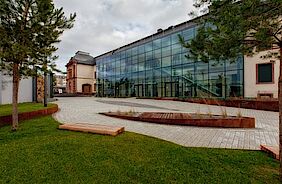
Photo: Harald Kröher

This information first appeared in the newspaper supplement "Westpfalz: Entdecken – Erleben – Genießen" of the Saarbrücker Zeitung/Pfälzer Merkur sponsored by the ZukunftsRegion Westpfalz e.V.
Diamond-Cutting Museum Brücken
Diamonds stand for immeasurable wealth, imperishable beauty, and material harshness - Marilyn Monroe sang of their appeal in her song "Diamonds Are a Girl's Best Friend.“ More than one hundred years ago the Ohmbachtal near Kusel in the Pfalz was home to a growing diamond-cutting industry. Today, a small museum preserves this history in a lively and impressive way. The museum shows, with the help of devices and demonstrations, how to work with the precious raw material.
Diamantschleifermuseum Brücken
Hauptstraße 47
66904 Brücken
GOOGLE MAPS
Phone 06386 99 31 68
WEB
Open Tuesday 9.30 am - 12 pm, Thursday 2 pm - 5 pm, Sunday 2 pm - 5 pm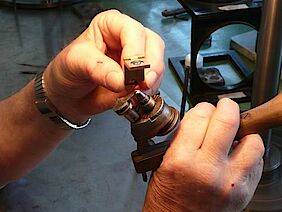
Photo: Förderkreis Diamantenschleifmuseum

This information first appeared in the newspaper supplement "Westpfalz: Entdecken – Erleben – Genießen" of the Saarbrücker Zeitung/Pfälzer Merkur sponsored by the ZukunftsRegion Westpfalz e.V.
Dynamikum Science Center
At the Dynamikum Science Center in Pirmasens, everything is different. 160 scientific and technological exhibits cannot only be looked at but also touched, explored and tried out. The first Rhineland-Palatinate science center has specialized on the topic of movement. The two-story building offers very interesting materials that are mediumistic and artfully prepared. The Mitmachmuseum (hands-on museum) in the former shoe factory “Rheinberger” and its vast grounds are close to the center of the city. This unique museum is known to be very high up on the to-do list of many families.
Dynamikum Im Rheinberger
Fröhnstraße 8
66954 Pirmasens
GOOGLE MAPS
Phone (063 31) 2 39 43-0
WEB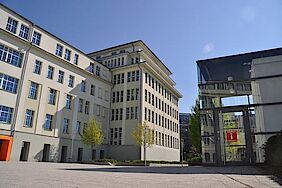
Photo: Barbara Löwe

This information first appeared in the newspaper supplement "Westpfalz: Entdecken – Erleben – Genießen" of the Saarbrücker Zeitung/Pfälzer Merkur sponsored by the ZukunftsRegion Westpfalz e.V.
Folk Festival (Volksfest) of the Westpfalz
The biggest party of the Westpfalz, called the Lautrer Kerwe (fair), lasts a whole 11 days. Between 200,000 and 250,000 visitors come to the Rummelplatz in Kaiserslatuern twice a year (once in May and once in October) for this popular festival. The Kerwe kindles the summer feeling, party mood, and love of life and adventure. The last day of the fair is celebrated with a large fireworks show.
Lautrer Kerwe
Kaiserslautern Messeplatz
67665 Kaiserslautern
GOOGLE MAPS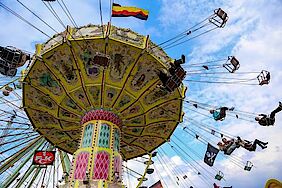
Photo: Michael Gottschalk

This information first appeared in the newspaper supplement "Westpfalz: Entdecken – Erleben – Genießen" of the Saarbrücker Zeitung/Pfälzer Merkur sponsored by the ZukunftsRegion Westpfalz e.V.
Garden Show Kaiserslautern
Open from April to October, the Rhineland-Palatinate Gartenschau (Garden Show) annually attracts thousands of visitors to the grounds of the former worsted spinning mill with its “Gärten der Vielfalt” ("Gardens of Diversity") show. The show offers attractions for the whole family with its magnificent seas of flowers and a diverse program of events and cultural offerings attractions for the whole family. Notable highlights: the largest dinosaur exhibition in Europe and an impressive Lego collection.
Gartenschau Kaiserslautern
Lauterstraße 51
67659 Kaiserslautern
GOOGLE MAPS
Phone (0631) 71 00 70
WEB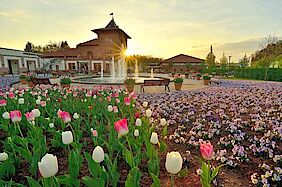
Photo: Anna Wojtas

This information first appeared in the newspaper supplement "Westpfalz: Entdecken – Erleben – Genießen" of the Saarbrücker Zeitung/Pfälzer Merkur sponsored by the ZukunftsRegion Westpfalz e.V.
German Shoe Museum Hauenstein
Hardly any other accessory reveals so much about the fashion, way of life, and the cultural space from which they originate as well as shoes. In a former shoe factory, the shoe museum Hauenstein presents a unique, worldwide collection. There, in addition to nostalgic machines and equipment, more than 3,500 exhibits are distributed around 3,000 square meters of exhibition space.
Something particularly interesting you’ll learn at the museum: What adorned the feet of prominent figures.
Deutsches Schuhmuseum Hauenstein
Turnstraße 5
76846 Hauenstein
GOOGLE MAPS
Phone 0 63 92 92 33 34-0
WEB
Open daily 9.30 am - 5 pm
This information first appeared in the newspaper supplement "Westpfalz: Entdecken – Erleben – Genießen" of the Saarbrücker Zeitung/Pfälzer Merkur sponsored by the ZukunftsRegion Westpfalz e.V.
Greek temple
The Carolinensaal in the city center of Pirmasens is fairly unknown. The building was built with Greek temples’ architecture as a model and was used as a consecration hall for the old cemetery between 1880 and 1959. Only recently its purpose shifted; since then concerts, readings or exhibitions have taken place there. Princess Caroline of Hessen-Darmstadt spent her childhood in the southern West Palatinate and the temple is dedicated to her.
Carolinensaal
Buchsweiler-Tor-Platz
66953 Pirmasens
GOOGLE MAPS
WEB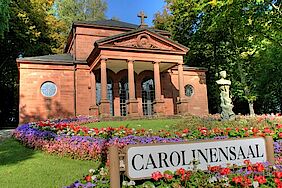
Photo: Jan-Erik-Nord

This information first appeared in the newspaper supplement "Westpfalz: Entdecken – Erleben – Genießen" of the Saarbrücker Zeitung/Pfälzer Merkur sponsored by the ZukunftsRegion Westpfalz e.V.
Hummel Pharmacy
The vaulted cellar under the Hummel pharmacy in Wallhalben is a secret. Underneath lies a second pharmacy from a bygone era. It hides in its old cupboards glass bottles with original ingredients and packaging, and recipe books. Helke Burkhardt, owner of the Hummel pharmacy, inherited these treasures from her father and created a small pharmacy museum. On special occasion or by appointment, she shows visitors how tablets and tinctures were once made.
Hummel-Apotheke
Hauptstraße 12
66917 Walhalben
GOOGLE MAPS
Phone (06375) 242
This information first appeared in the newspaper supplement "Westpfalz: Entdecken – Erleben – Genießen" of the Saarbrücker Zeitung/Pfälzer Merkur sponsored by the ZukunftsRegion Westpfalz e.V.
Japanese Garden
The Japanischer Garten (Japanese Garden) in Kaiserslautern is far more than a pretty garden with pink Cherry blossoms. This garden—the largest closed Japanese garden in Europe—magnetically attracts lovers of nature with its natural landscape designed according to strict aesthetic and philosophical considerations. The garden also has a waterfall, ponds and a historic tea house. For information on events and opening times, visit the website.
Japanischer Garten—Kaiserslautern e.V.
Am Abendsberg 1
67657 Kaiserslautern
GOOGLE MAPS
Phone (0631) 3 70 66 00
WEB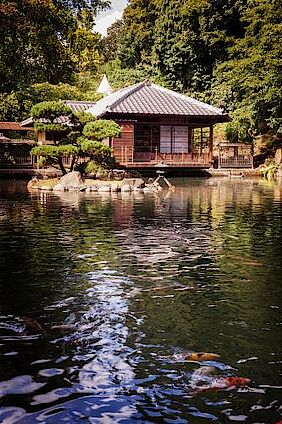
Photo: Andreas Gläser

This information first appeared in the newspaper supplement "Westpfalz: Entdecken – Erleben – Genießen" of the Saarbrücker Zeitung/Pfälzer Merkur sponsored by the ZukunftsRegion Westpfalz e.V.
Kyllburg: Collegiate Church
Kyllburg Collegiate Church is the largest single hall Gothic-styled church north of the Alps. Its central nave has a wingspan of 13.5 meters, a square cloister and numerous gravestones dating from the Middle Ages. Also worth noting is Madonna High on the high altar.
Stiftskirche Kyllburg
Auf dem Stift 2
54655 Kyllburg
GOOGLE MAPS
Opening hours daily 8 – 18.00. Guided tours by appointment only.
Phone 06563-930243
Distance from Spangdahlem 15 km
This information first appeared in the touristic brochure "Welcome to our region!" of the Host Nation Council Spangdahlem e.V.
Landscape Park Strecktal
The landscape park Strecktal is very close to Pirmasens’ city center and was built between 1998 and 2001. Stretching across 17 acres, the “green lungs” are used as a multifunctional recreation area by visitors. There’s a Disc-Golf installation where you can get twelve holes in as well as a skate park. Adventure, water playground, and a barefoot path are ideal for energetic and adventurous young people. You can also spend your time treading in the Kneipp-basin or biking on the 24,8 kilometers long Dynamikum trail that leads you over the border to France. At the center of this park, you can find a pond with a stage, a small waterfall with its creeks, and a Poissy-Garden to stay in.
Strecktalpark Pirmasens
Fröhnstraße 8
66954 Pirmasens
GOOGLE MAPS
WEB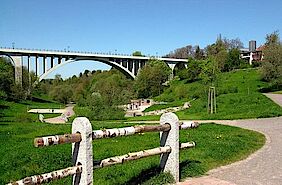
Photo: Sabine Reiser/Stadt Kaiserslautern

This information first appeared in the newspaper supplement "Westpfalz: Entdecken – Erleben – Genießen" of the Saarbrücker Zeitung/Pfälzer Merkur sponsored by the ZukunftsRegion Westpfalz e.V.
Monastery Hornbach
The former Benedictine monastery Hornbach impresses with its traditional architectural beauty and is intertwined with modern elements, and the spiritual presence of the past still resides within these walls. Here, the hotel Kloster Hornbach resides with its unobtrusive elegance. It promises relaxation and hospitability. Guests are pampered in four restaurants and therefore visit from all over the world.
Kloster Hornbach
Im Klosterbezirk
66500 Hornbach
GOOGLE MAPS
Phone (0 63 38) 91 01 00
WEB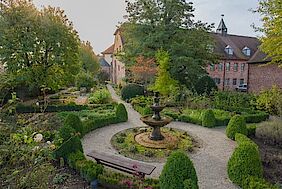
Photo: Anna Wojtas

This information first appeared in the newspaper supplement "Westpfalz: Entdecken – Erleben – Genießen" of the Saarbrücker Zeitung/Pfälzer Merkur sponsored by the ZukunftsRegion Westpfalz e.V.


